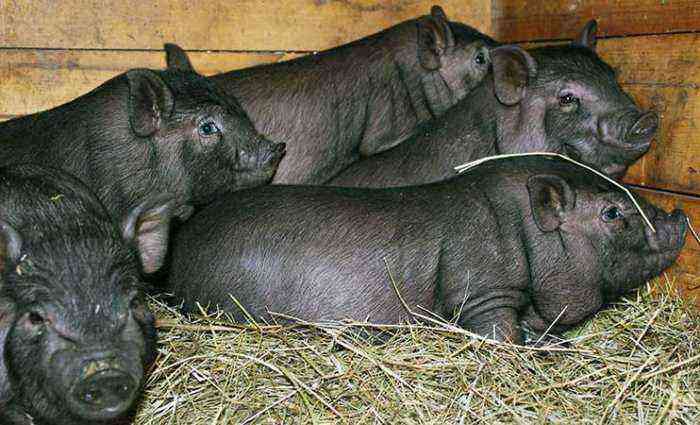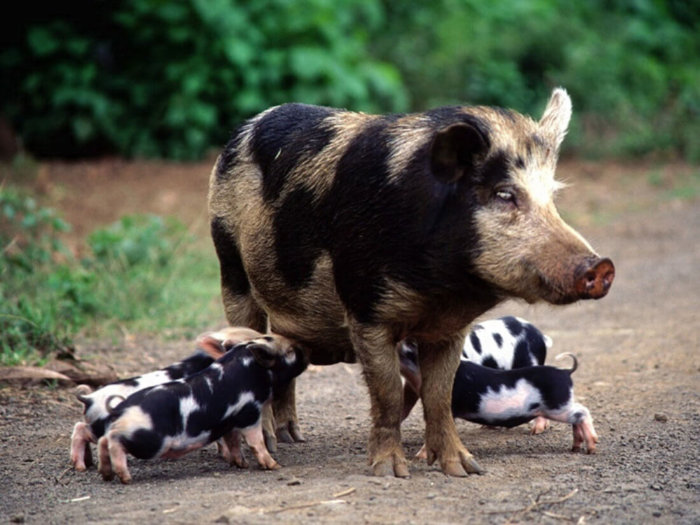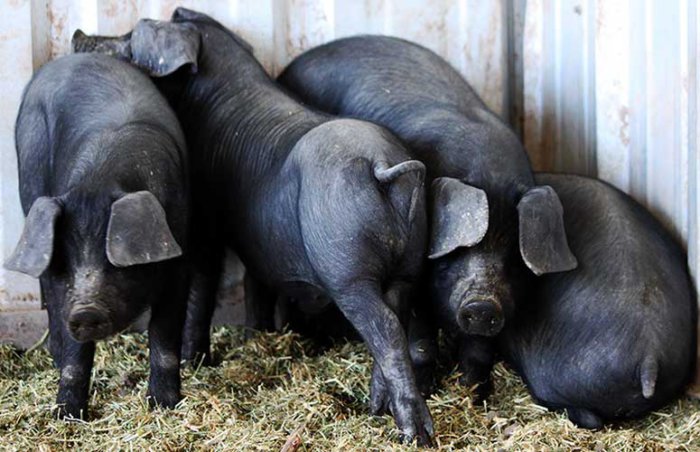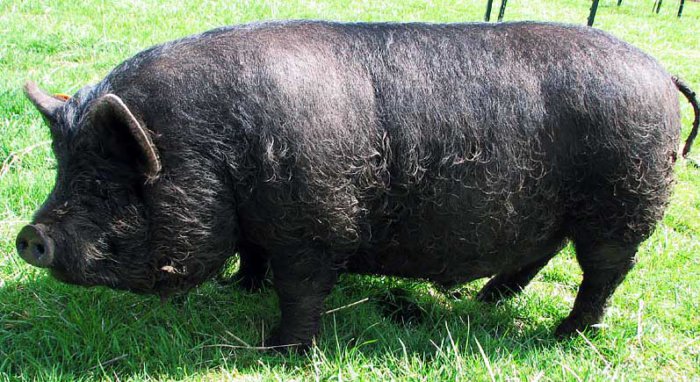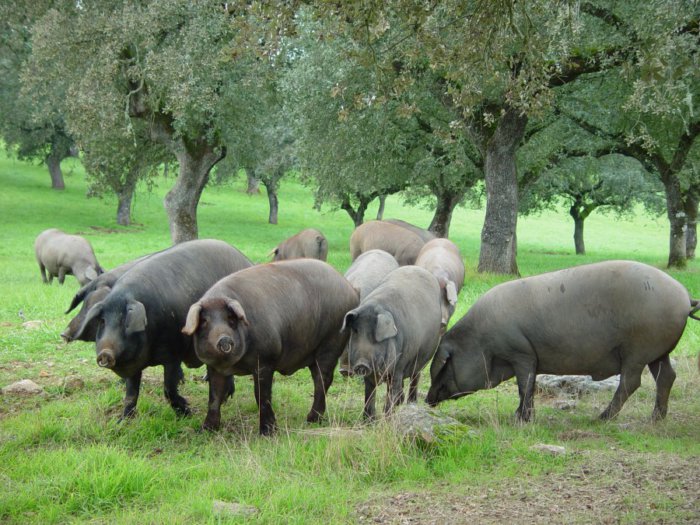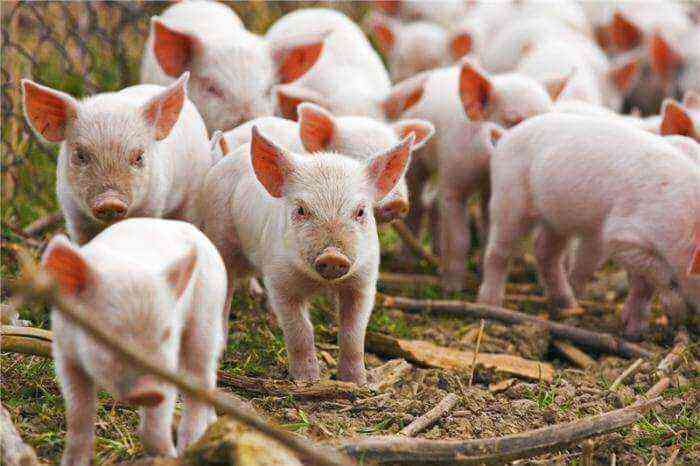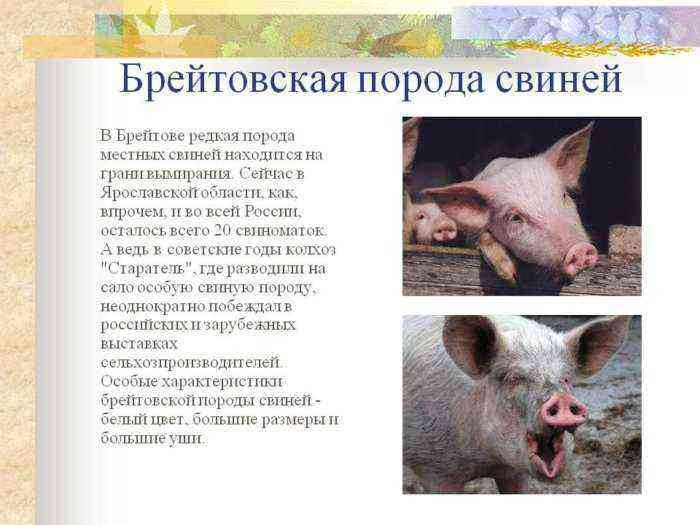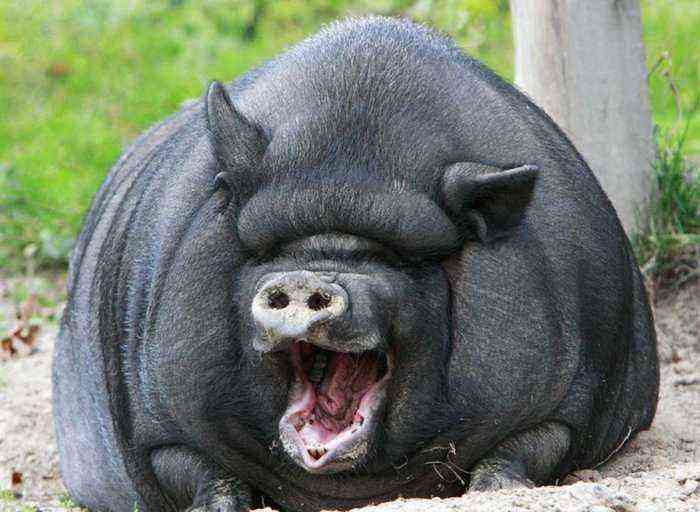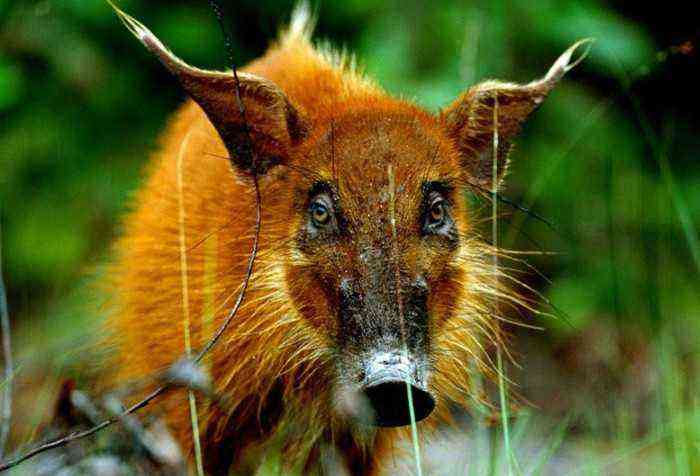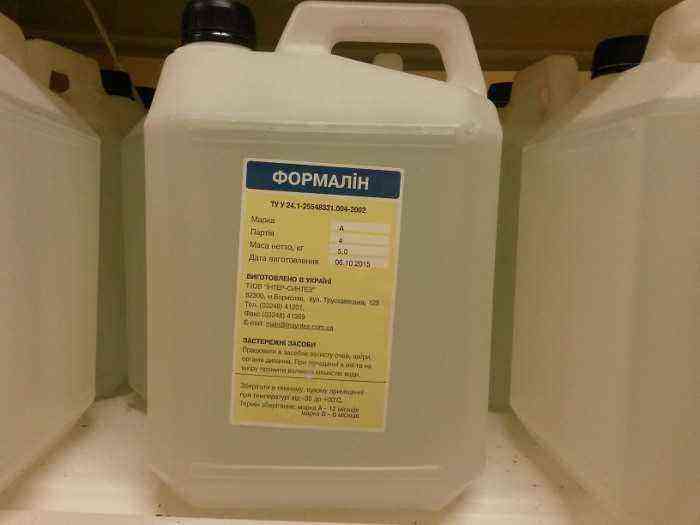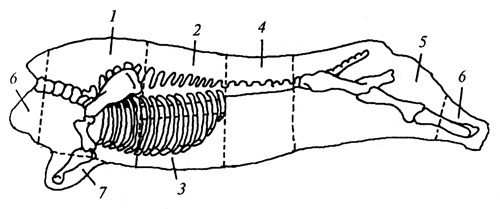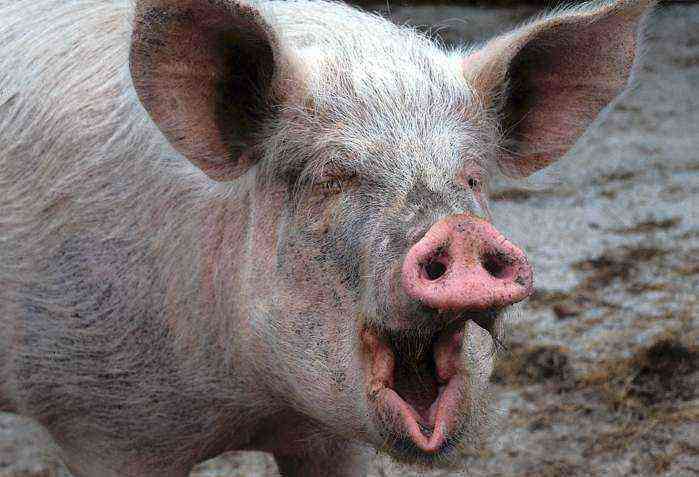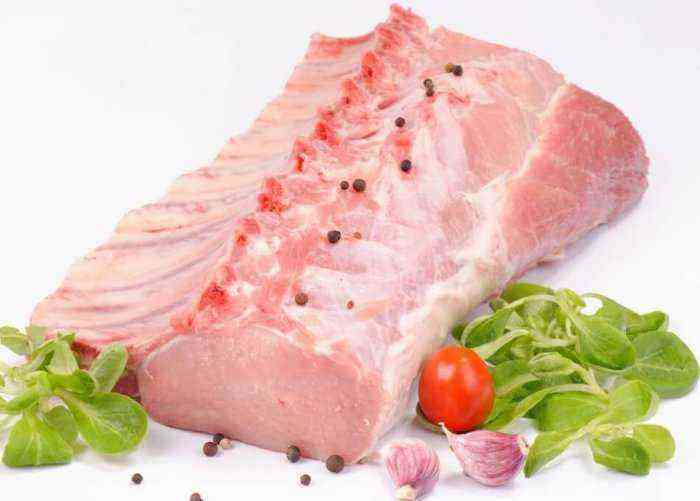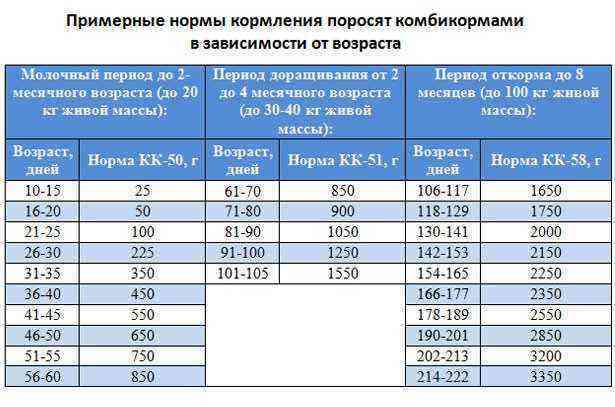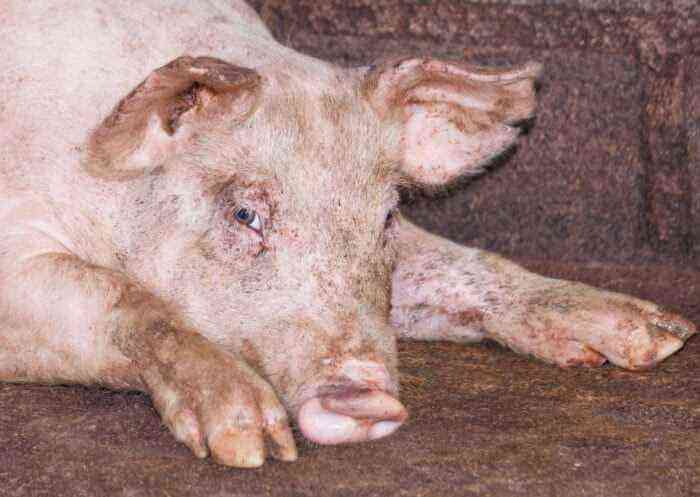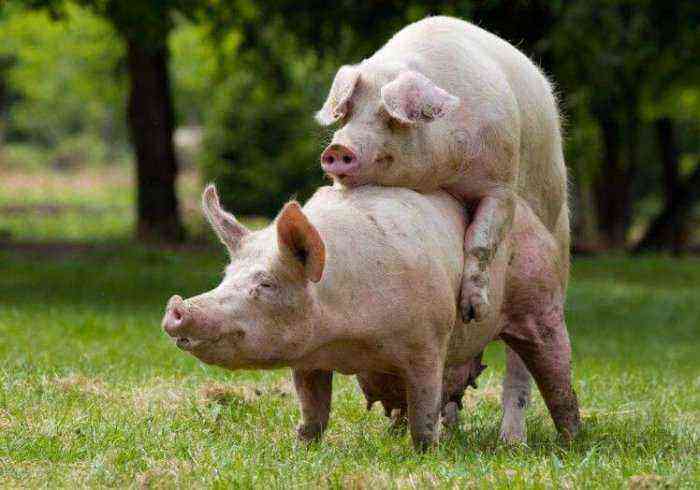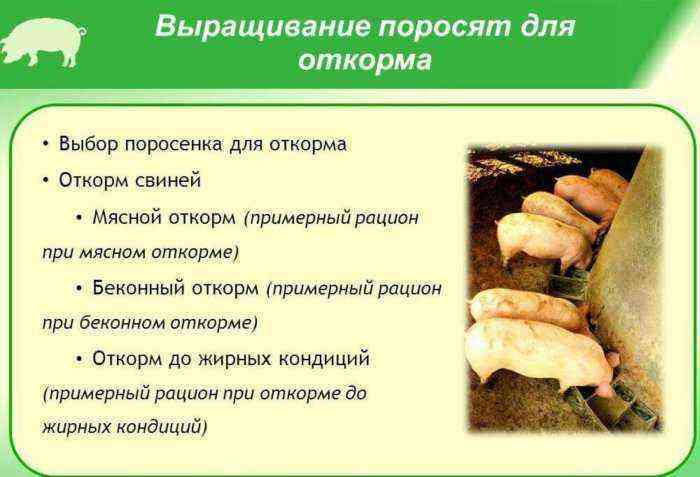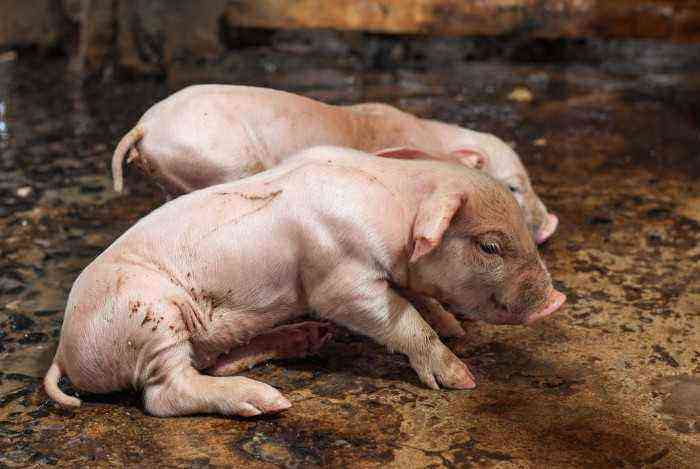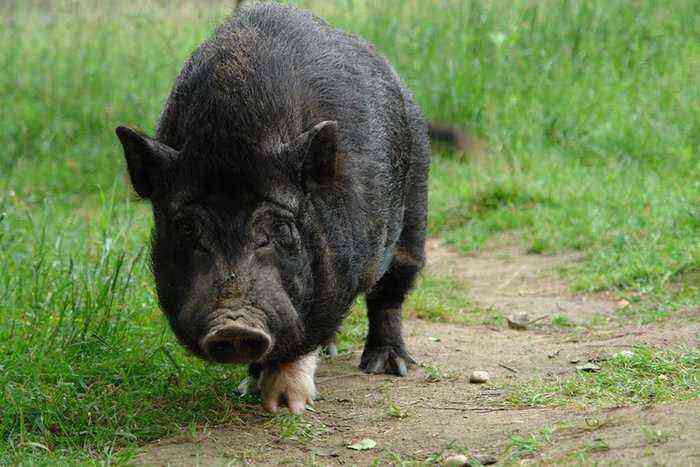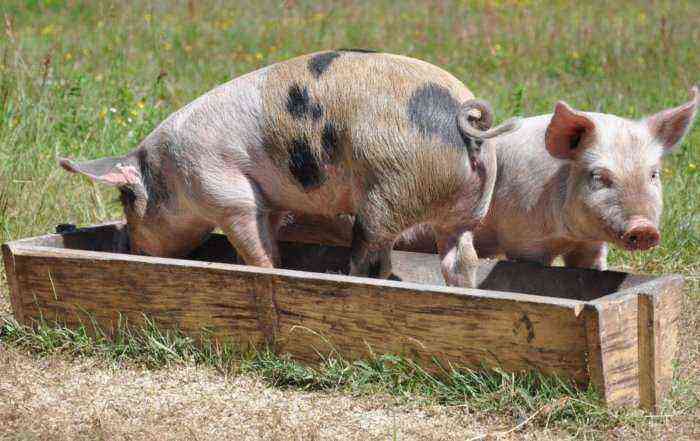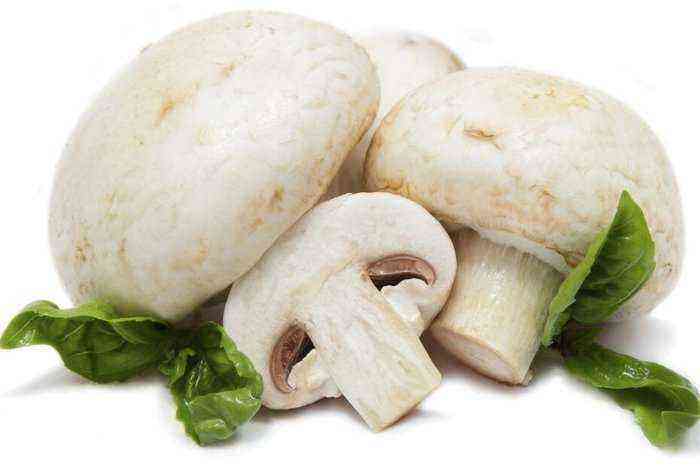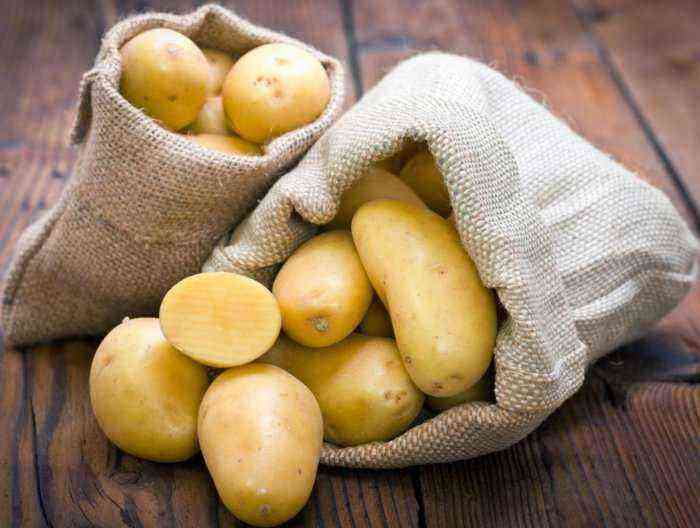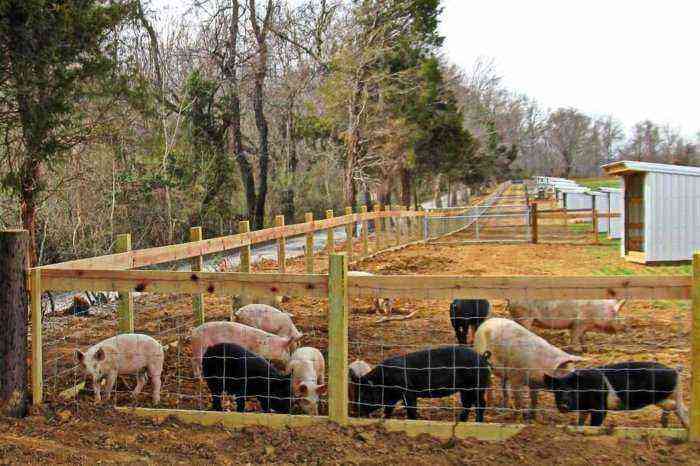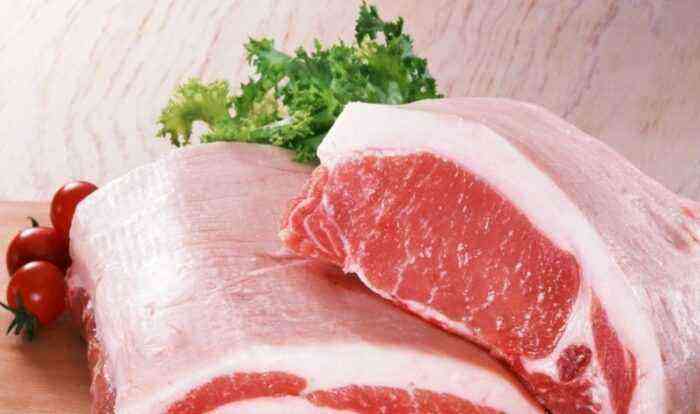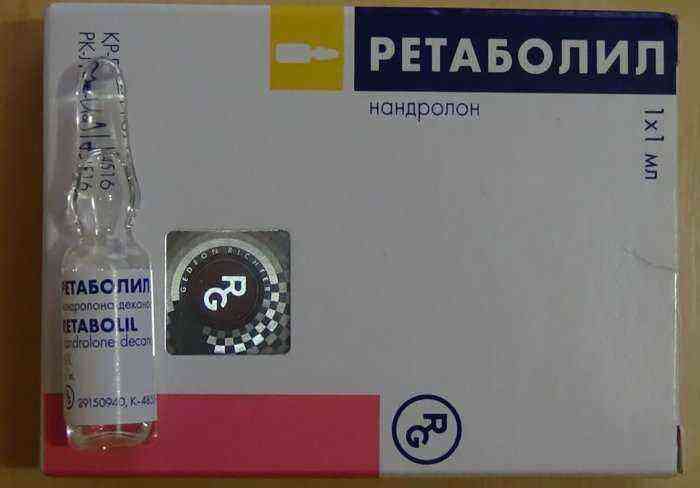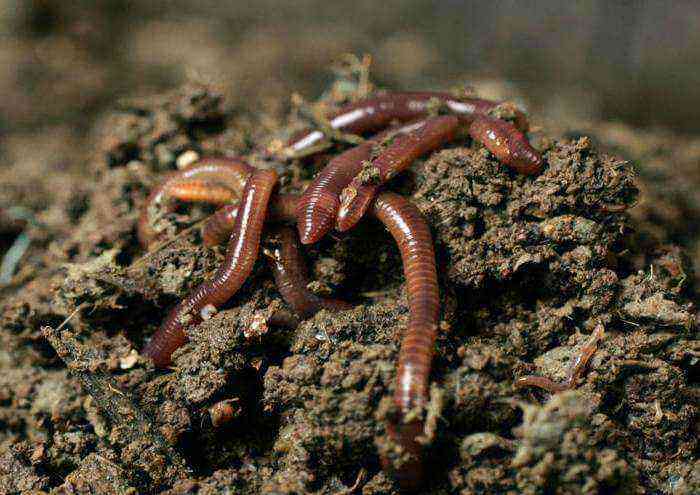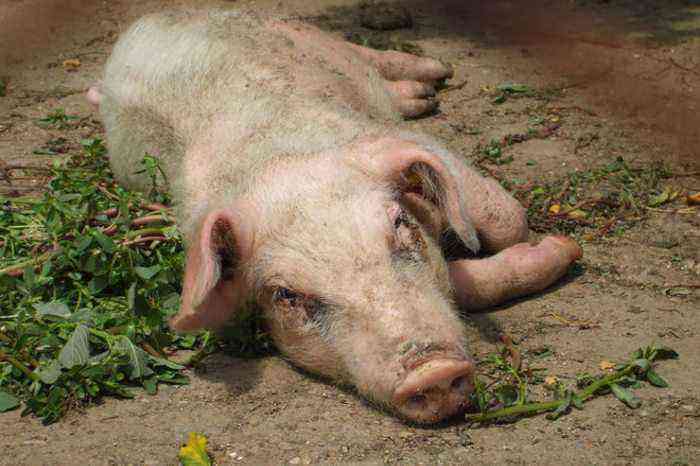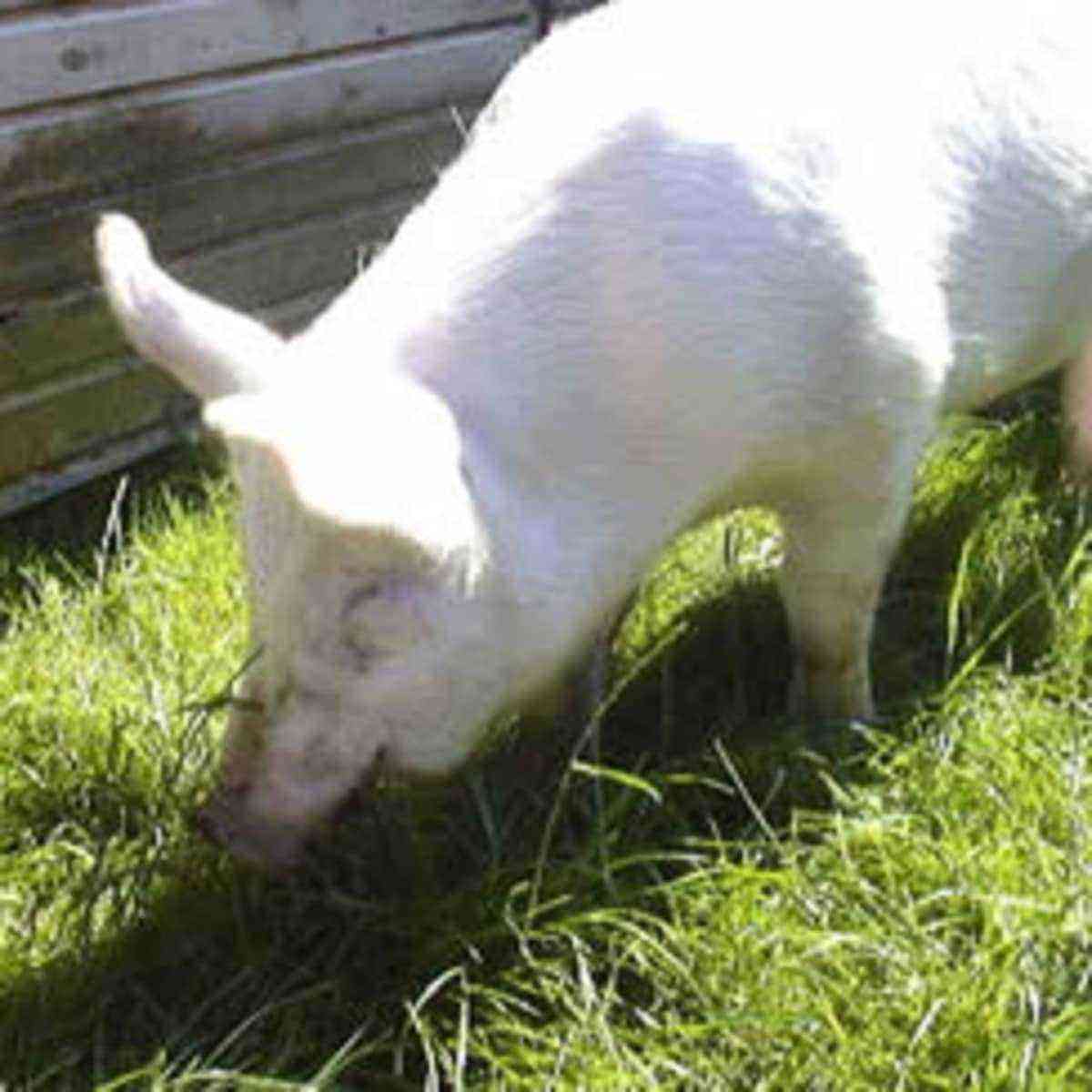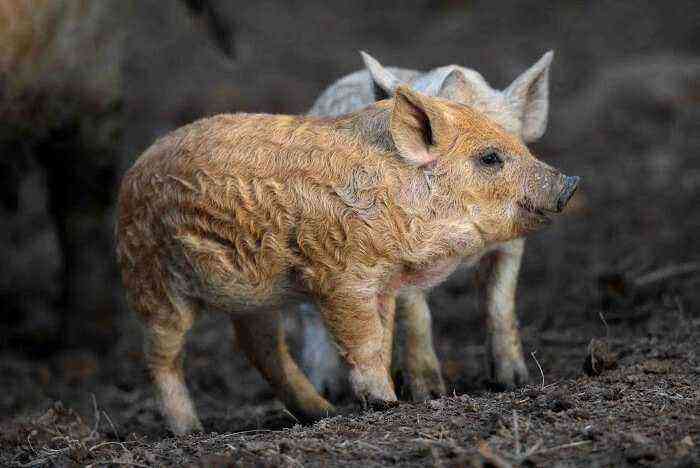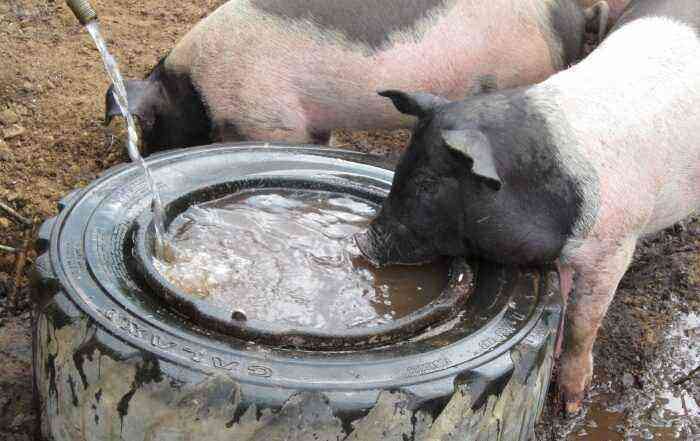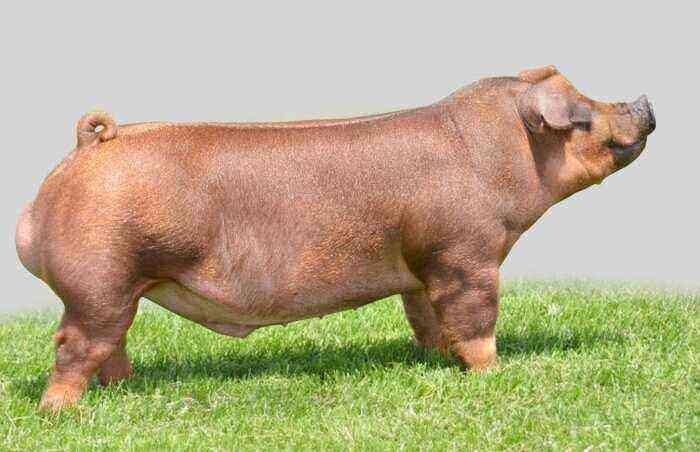Today, farm owners raise pigs for a variety of purposes. Someone just wants to feed the family with natural homemade meat. Someone gets a considerable income from the sale of pork and piglets for divorce. At the same time, if not so long ago the number of breeds bred in the domestic expanses reached 5-6, then today their diversity has increased to several tens. And a black pig is of particular interest to breeders.
Black pig breeds
Common breeds of black pigs
Such an unusual color differs not one specific, but several diverse breeds at once. Each of them implies its own characteristics of constitution, behavior, subtleties of care and value for the breeder. Moreover, of all the existing varieties of such a pig, there are several breeds that are especially in demand among farmers.
Vietnamese
The Vietnamese bellied pig was introduced to Europe at the end of the XNUMXth century. Its homeland is Southeast Asia. The animal immediately became popular with a domestic breeder due to its calm disposition, high productivity and a number of other positive features.
The appearance of such a pig is quite characteristic. Its weight reaches an average of 70-80 kg, although with excessive nutrition and a long period of maintenance it can reach 130-150 kg. The chest and back are particularly massive. In addition, the distinctive features of the breed also include a pendulous ventral part, which in adult heads practically touches the ground. The legs are quite short, due to which outwardly such a pig seems even more squat.
The Vietnamese breed is in demand today due to some of its features, including:
vietnamese bellied pig
- Rapid adaptation to different climatic conditions. Along with it, animals have a high resistance to disease.
- Accelerated puberty and fertility. For the female, it occurs by 4 months, the boar is ready for mating at 5-6 months of age. For a year, the female gives two offspring of 12-14 piglets.
- Ease of care for piglets. These pigs are distinguished by a well-developed maternal instinct, they themselves take care of the offspring, but at the same time they tolerate human intervention.
- The meat of the breed is considered a delicacy, and the sebaceous layer, with proper feeding, does not exceed 3 fingers.
Berkshire
The Berkshire pig has become widespread due to its undemanding type of food and living conditions. This breed is classified as meat. Individuals belonging to it are distinguished by large breasts, broad backs and powerful hams. At the same time, the belly is tucked up, and the sides are rounded and protrude to the sides. The color of this species is predominantly black with white spots on the nose and paws.
Berkshire differs from other breeds in the following features:
- Rapid growth of young. On average, in six months from birth, a piglet is able to grow up to a weight of 100 kg. And already by 5-6 months it fully matures for mating.
- Relatively low fertility. A sow at a time leads no more than 8 piglets. But highly developed maternal instincts require minimal care on the part of a person.
- Lots of meat. The average weight of one adult Berkshire is about 220 kg. The meat product of the total live weight is about 88%. At the same time, the thickness of the fat does not exceed 3,56 cm. The meat of young individuals is especially appreciated because of its tenderness.
Berkshire pig
black-and-white
Belarusian Black-and-White pigs are the result of a long-term selection, in which the Polissya breed was crossed with the Berkshire, Black Large, White Large breed and Landrace. Today, their breeding is popular among farmers in Belarus, Ukraine, Russia, Kazakhstan and certain regions of Tatarstan.
The color of this breed is dominated by combinations of black with white and red spots. The physique of animals is strong and massive. The broad powerful back, deep chest and rounded sides stand out especially. The legs are short with medium-sized hams (up to 10,4 kg). The skin tightly fits the muscles without wrinkling. An adult boar in size reaches 330 kg, while the body length is 175 cm. The sow grows up to 240 kg, and its length is 165 cm.
The fertility of the black-and-white pig is 9-12 piglets per farrow. The female has a well-developed maternal instinct and care for offspring. As for the offspring itself, one piglet for a mass of 100 kg comes out in approximately 180-190 days. All babies are born strong and healthy.
This breed is grown as a meat-fat. On average, the yield of meat from the total weight is 57%. At the same time, fat with a thickness of 3,2 cm occupies 32-33%. The meat is of high quality and highly valued.
One of the main advantages of individuals of this variety is the high resistance to diseases that are familiar to other breeds. Animals are unpretentious to living conditions and feed. In addition, they feel good on pastures, where they feed with pleasure on pasture.
It is worth noting that some other varieties also belong to the black-and-white breeds. For example, they include:
- Mirgorodskaya;
- North Caucasian;
- пьетрен.
Belarusian black-and-white pigs
But in terms of constitution, fertility and productivity, they are almost identical to the Belarusian one.
Black and white
The Kemerovo black and white breed is the result of crossing a Siberian pig with a Berkshire, Large Black and Large White. As in the case of the Belarusian variety, it is distinguished by a black color with white spots.
The constitution of individuals of this species is represented by an elongated body with massive hams and back. The chest is also distinguished by its width and fleshiness, the neck is thick, and the muzzle is long. The ears of the Kemerovo pig are small and raised up.
An adult black and white sow reaches a weight of 250 kg. The boar is able to gain weight and up to 350 kg. As for fertility, one female is able to bring no more than 11 piglets per farrowing. The offspring are characterized by a high rate of maturation. In 200 days, a piglet reaches a weight of 100 kg. Also, among other animals, this species is distinguished by a rather calm disposition and unpretentiousness.
Large black
The large black breed of pig originates in England. Here, several eminent breeders, in an attempt to increase the productivity of animals, crossed three breeds together at once:
- Neapolitan pig;
- Chinese black;
- long-eared.
As a result of such crossing, it was possible to obtain a fairly productive variety of pigs. Their main difference is an extremely correct and strong constitution. The elongated body looks like a barrel. A wide convex chest passes into a short but powerful neck. The back is slightly elongated straight, the loin is wide and fleshy. The hams are quite massive and have a pronounced relief. The head of this species is quite small. At the same time, large ears hang over the eyes, often blocking the view.
By weight, this breed belongs to the large. The average weight of a boar is from 260 to 400 kg. The sow is able to reach a weight of 200-300 kg. Up to 100 kg, a piglet grows within 5-6 months. Of the total live weight of one adult, 52,5% is meat. The rest is fat and bones.
Large black pig breed
The advantage of this type of pigs is high fertility. For one farrowing, the female brings 10-12 babies, which mature very quickly. Also, the list of advantages should include easy tolerance of summer heat and a proportionally strong physique. The last point was the reason that quite often such individuals are acquired not for meat, but for breeding work.
rare breeds
All of the listed breeds of black pigs are widespread in the post-Soviet countries. Farmers everywhere breed them in large livestock for sale or several individuals in small private farms. But in addition to these several breeds, there are also rarer ones, which are bred by a few.
Nero di Parma or Nera Parmezan
The Nero di Parma is considered an indigenous Italian breed. The animals representing it are distinguished by high winter hardiness and special requirements for keeping. It is worth noting that the livestock of this breed in the world was restored only recently, since Nera Parmesan has practically disappeared in the history of development.
The exterior of this species of animals is quite strong. The body is elongated and barrel-shaped. It smoothly turns into a large head. At the same time, the neck, due to its massiveness, practically does not stand out. The hams are medium in size and taper closer to the joint. The skin on the sides and neck is folded.
The average weight of one individual Nero di Parma is 190-240 kg. The breed belongs to meat, as the percentage of subcutaneous fat is quite low. In terms of fertility, these animals do not stand out from the total mass. At a time, the female brings up to 10 piglets.
guinea pig
It is believed that the Guinean variety has African roots. It was from Africa that the breed came to America, where it began to be bred on vast pastures. But, it is worth noting that today the number of such animals is rapidly declining, as most breeders prefer more productive and prolific breeds.
Guinea variety of pigs
In terms of size and weight, Guineans are small individuals. Usually the weight of an adult boar does not exceed 100 kg. The sow weighs even less, approximately 50-70 kg. The weight of a newborn piglet is only 0,5 kg. Due to their small size, many breeders seriously suggested that the Guinean pig be classified as a mini pig breed.
The body of such animals has an almost regular oval shape. At the same time, these strong men are stacked quite tightly and look massive, which does not correspond well to disproportionately short legs. From above, the skin of an adult is covered with thick black hair.
As for the productivity of this type of pig, it is insignificant in comparison with other species. The reason for this is the small size and high fat content in live weight. Of the features of this breed, it is worth mentioning:
- Natural fearlessness before snakes. They catch them easily.
- Complete herbivory, which allows Guineans to graze in the meadows, like any other livestock.
Black Iberian pig
The black Iberian pig is a native of Spain and Portugal. It was here that this variety was bred at one time. But, today, as in the case of the Guinean breed, there are very few Iberians left. Information about each born piglet is even recorded in the relevant registers, where the livestock is clearly counted.
It is worth noting that the reason for such attention to the breed is not only its small number. The world-famous Iberian jamon (meat dish) is made from pork of this variety. This happens because such meat belongs to marble and has a special taste due to the specific conditions of detention.
Iberian pig
Such pigs in their homeland are kept on the farm only until October. Then the whole herd is released, and for 3-4 months it freely walks through the nearby forests, where it feeds on acorns of oaks, wild herbs and roots. It is believed that they give the meat product a special taste.
The appearance of this breed suggests the following features:
- black (rarely gray) skin without folds and sagging;
- an elongated rounded body, on which the hairline is completely absent. The ridge is arched upwards;
- long slender legs with strong black hooves;
- elongated muzzle with saucer-shaped ears hanging over the eyes.
The Iberian pig has an extremely large appetite and, without the control of the breeder, quickly gains fat. But if we talk about growth in general, then the weight of the animal increases extremely slowly.
Conclusion
Most of the listed breeds are meat-fat. The tendency to quickly gain body fat is their common feature. But, what breed is most suitable for the farmer in terms of size and productivity can now be easily determined based on the described features.
